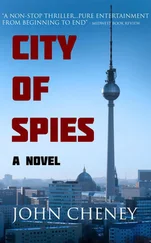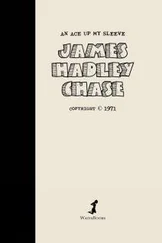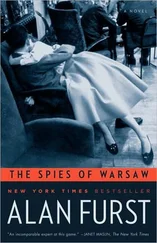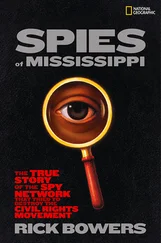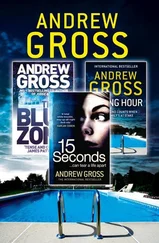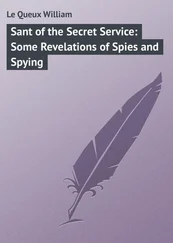51. Ibid.
52. Reilly resigned as a director on 24 May 1924. A liquidator was appointed to wind up the company on 20 May 1925 (File of the Modern Medicine Company Ltd, PRO BT 31/27894).
53. Britain’s Master Spy – The Adventures of Sidney Reilly, p.123ff.
54. Ibid.
55. Ibid.
56. Letter from Pepita Reilly to ‘Cita’ (Alice Menzies), 25 January 1924 (Papers of Mrs A.C. Menzies).
57. Letters from Sidney Reilly to Boris Savinkov, dated 19 February and 15 March 1924. (Fond R-5831, Inventory 1, State Archive of the Russian Federation, Moscow).
58. US Immigration, Port of New York, Volume 7978, p.50, 15 May 1924.
59. Letter from Sidney Reilly to Winston Churchill, 3 September 1924 (CHAR 2/134/110 & 111–114, Churchill Archives Centre, Churchill College, Cambridge).
60. Morning Post, 15 September 1924, p.11.
61. Letter from Winston Churchill to Sidney Reilly, 15 September 1924 (CHAR 1/134/130, Churchill Archives Centre, Churchill College, Cambridge).
62. Letter from Sir Archibald Sinclair to Winston Churchill, 23 September 1924 (CHAR 2/134/130, Churchill Archive Centre, Churchill College, Cambridge).
63. Because Reilly had destroyed his contract with Baldwins, his case was very much his word against Samuel Vauclain’s. The best line for White and Case to take was therefore demonstrating to the court that Reilly was a dishonest and disreputable character whose word could not be trusted. This was not a difficult case to make and as the Bureau of Investigation had found during their probe, there was no shortage of people in New York willing to offer testimony. It is notable that Reilly did not permit Pepita to accompany him to court, which would clearly have exposed her to the many tales of his less than salubrious past.
64. Trading Ventures Inc., Certificate of Incorporation in the State of New York No. 1716116, 23 December 1924, p.4.
65. Letter from Sidney Reilly to Edward Spears, 22 January 1925 (Robert Bruce Lockhart Collection, Box 6, Hoover Institution Archives, Stanford, California).
66. Ibid.
67. See note 64, p.2.
1. Letter from Ernest Boyce to Sidney Reilly, 24 January 1925 (Robert Bruce Lockhart Collection, Box 6, Hoover Institution Archives, Stanford, California). Also reproduced in Britain’s Master Spy – The Adventures of Sidney Reilly, pp.172–74.
2. Reilly’s reply. Ibid., pp.175–77.
3. Letter from Sidney Reilly to Nikolai Bunakov, 27 March 1925 (Trust File No. 302330, Vol. 37, Central Archives of the Federal Security Service, Moscow).
4. Ibid.
5. Letter from Sidney Reilly to Ernest Boyce, 4 April 1925, Britain’s Master Spy – The Adventures of Sidney Reilly, pp.182–83.
6. Ibid, p.185.
7. Ibid, p.187.
8. Letter from Sidney Reilly to Pepita Reilly, 22 September 1925, Papers of Nelly Haddon Chambers (Pepita Reilly). Also reproduced in Britain’s Master Spy – The Adventures of Sidney Reilly, pp.188–89.
9. Ibid.
10. Undated report from Alexander Yakushev in ‘Trust’ File No 302330, Vol. 37, p.112 (Central Archives of the Federal Security Service, Moscow).
11. Ibid.
12. Letter from Sidney Reilly to Pepita Reilly, 25 September 1925, Papers of Nelly Haddon Chambers (Pepita Reilly). Also reproduced in Britain’s Master Spy – The Adventures of Sidney Reilly, pp199-203.
13. Undated Report from Alexander Yakushev in ‘Trust File No 302330, Vol. 37 (Central Archives of the Federal Security Service, Moscow).
14. Ibid. Margaret Reilly also quotes her husband as having said ‘that he would believe Russia would be entering the convalescent stage when she would turn round and massacre at least one million Jews’ (Letter from Margaret Reilly to SIS, 28 December 1931, Reilly Papers CX 2616)
15. See note 13.
16. Ibid.
17. SIS translation of letter written by Mikhail Trilisser of OGPU (INO), 1 October 1925 ( Reilly Papers CX 2616). The ‘valuables’ more than likely belonged to Yaroslavsky, the former secretary to the Soviet Legation in Vienna. In June 1924 he absconded from his post with a considerable sum of legation funds and disappeared. The OGPU (INO) suspected that Yaroslavsky had asked Reilly to retrieve valuables of his located in Leningrad.
18. Telegram from Ernest Boyce to Pepita Reilly, 30 September 1925, Papers of Nelly Haddon Chambers (Pepita Reilly). Also reproduced in Britain’s Master Spy – The Adventures of Sidney Reilly, p.193.
19. Letter from Ernest Boyce to Pepita Reilly, 1 October 1925, Papers of Nelly Haddon Chambers (Pepita Reilly). Also reproduced in Britain’s Master Spy – The Adventures of Sidney Reilly, pp.193–94.
FOURTEEN – A LONELY PLACE TO DIE
1. Boris Gudz – interview with the author, 24 August 2002, Moscow.
2. Report by Vladimir Styrne, 7 October 1925, in ‘Trust’ File No. 302330, Vol. 37, p.241 (Central Archives of the Federal Security Service, Moscow). As we already know, Reilly attended neither Heidelburg nor the Royal Institute. Had he been an active Conservative, he would have been a member of the St George Hanover Square Conservative Association. Although the association’s records still exist they contain no reference to him as a member (Records of the St George Hanover Square Conservative Association, 487/8–9, 487/13, City of Westminister Archives Centre). However, there is no reason to believe that his letter to friend Paul Dukes (see note 27), advocating the Conservative cause is anything less than sincere.
3. Ibid.
4. Ibid, 9 October 1925.
5. Mutt was Boyce’s reference for Sidney – Pepita he referred to as Jeff.
6. Letter from Ernest Boyce to Pepita Reilly, 18 October 1925, Papers of Nelly Haddon Chambers (Pepita Reilly). Also reproduced in Britain’s Master Spy – The Adventures of Sidney Reilly, pp.197–98.
7. Britain’s Master Spy – The Adventures of Sidney Reilly, p.199.
8. Letter from Sidney Reilly to Vladimir Styrne, 13 October 1925 (Trust File No. 302330, Vol. 37, Central Archives of the Federal Security Service, Moscow).
9. Letter from Sidney Reilly to Vladimir Styrne, 17 October 1925 (Trust File No. 302330, Vol. 37, Central Archives of the Federal Security Service, Moscow).
10. The OGPU made photographic enhancements of the diary for the period 30 October–2 November 1925, which Reilly wrote in English, with occasional words or abbreviations in Russian. The entries for 3–4 November 1925 were not photographed but translated into Russian with the aid of magnification techniques. English translations of the Russian section of the diary have been published on several occasions during the past decade. The four most noteworthy are: ‘How the Russians Broke the Ace of Spies’, Philip Knightley (The Observer, 12 April 1992, pp.49–50); Deadly Illusions, John Costello and Oleg Tsarev, pp.38–40; ‘Sidney Reilly’s Lubyanka Diary’, Richard Spence, Revolutionary Russia, Vol. 8, No. 2, pp.179–94; and Iron Maze, Gordon Brook-Shepherd, pp.300–04. Of the four, Spence is the most thorough, providing speculative additions where the original text is abbreviated by single or multiple letters. Due to the nature of English/Russian translation, there have inevitably arisen differences of interpretation in the above publications. The method used throughout this book to translate from Cyrillic Russian to English is based on a modified Library of Congress system and names have therefore been translated according to popular usage, i.e. Savinkov instead of Savinkoff, Gorky instead of Gor’kii, Zalessky instead of Zalesskii.
11. Ace of Spies (1992 edition), p.188.
Читать дальше

